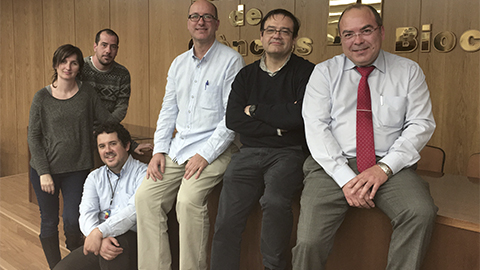New autonomous microsensor is capable of detecting respiratory problems

19/09/2016
The sensor is extremely sensitive and can detect and measure very small variations in gas flows through a change in temperature. This allows it to monitor in real-time the physical variables of interest in very different areas, including the health sector.
"It's particularity lies in the fact that is consumes no external energy since it uses residual warmth to power itself, and this make it independent, easy to integrate in wireless networks and significantly cheaper than other devices on the market", explains Sebastián Moreno, CEO of FutureSiSens, the tech-based company which researchers founded to commercialise the sensor.
In the health sector, the device can be used to measure a person's breathing and detect respiratory problems, such as sleep apnoea or pneumonia, all at a very low cost.
"We are in the process of testing a prototype to compare our sensor with the equipment currently used in hospitals in order to detect these alterations and see what advantages and benefits it can provide", Moreno says. "At the moment, to diagnose an apnoea correctly patients need to spend the night at the hospital and be monitored by qualified personnel, with an infinite number of sensors hooked onto them to check their vital signs. The characteristics of our sensor, such as its high sensitivity, reduced size and autonomy, make it a highly potential device in this sector", he highlights.
Thanks to its size (currently measuring 5mm2 but soon to be reduced to 2mm2) researchers also point out that it can be easily integrated into individual protection equipments, such as professional clothes used when working in dangerous settings, e.g., firefighters, miners, etc. with the aim of instantly detecting a respiratory arrest and sending an alarm signal requesting immediate help.
The microsensor can also be used to improve energy efficiency and the safety of industrial plants and intelligent buildings by detecting dangerous gases and other anomalies. "The measuring and gathering of data in real-time, together with its immediate processing, is key for effective decision making; even if there are other sensors on the market, the majority are fairly large, consume energy and cannot be easily integrated into wireless networks, which means that this product is extremely competitive in these sectors," Moreno points out.
FutureSiSens has created several different microsensor prototypes which are now being tested in real situations, with the hope of commercialising them around mid-2017.
The device is one of the winning projects of the fifth edition of the Fundación Repsol Entrepreneurs Fund and has been developed by researchers Javier Rodríguez Viejo and Aitor Lopeandía, from the UAB Department of Physics, Llibertat Abad and Francesc Xavier Muñoz Pascual, from the IMB-CNM, and Antonio López, from the UPC.